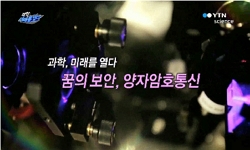This study examines Iryon’s historical focus on the wondrous and strange to rethink its implications. By acknowleding the legendary as historical fact, Iryon’s mention of the “wondrous and strange” (神異, sini) in the foreword of “Record o...
http://chineseinput.net/에서 pinyin(병음)방식으로 중국어를 변환할 수 있습니다.
변환된 중국어를 복사하여 사용하시면 됩니다.
- 中文 을 입력하시려면 zhongwen을 입력하시고 space를누르시면됩니다.
- 北京 을 입력하시려면 beijing을 입력하시고 space를 누르시면 됩니다.

『삼국유사』를 통해 본 신화와 역사의 접점 = The Intersection of Myth and History in Memorabilia of the Three Kingdoms
한글로보기https://www.riss.kr/link?id=A106377776
- 저자
- 발행기관
- 학술지명
- 권호사항
-
발행연도
2019
-
작성언어
-
-
주제어
신이 ; 꿈 ; 통과의례 ; 접점 ; 조율장치 ; wondrous and strange ; dreams ; rite of passage ; intersection ; tuning device
-
KDC
800
-
등재정보
KCI등재
-
자료형태
학술저널
-
수록면
195-221(27쪽)
-
KCI 피인용횟수
0
- 제공처
-
0
상세조회 -
0
다운로드
부가정보
다국어 초록 (Multilingual Abstract)
The previous literature on Iryon’s historical view has mainly discussed it from a historical or Buddhist perspective, but this study examines the Cho Sin and Tangun legends from a psychological and/or rite of passage structure, focusing on the Memorabilia of the Three Kingdoms’ worldview of the intersection of myth and history.
Aside from the foreword and conclusion, this study is organized into four chapters, with the second chapter questions the implications of the “wondrous and strange” in national history. The third chapter analyzes Cho Sin’s dream and how it coincided with reality from the viewpoint of Jungian psychology. The fourth chapter analyzes Tangun’s birth as part of the joining of the heavenly and earthly realms as a rite of passage. The final fifth chapter discusses the content of the second to fourth chapters and examines the implications of the “wondrous and strange” at the intersection of history and myth.
As History of the Three Kingdoms was a treatment of national history based on Confucian rationalism and ethics by Confucian scholars of the time, Iryon ineviatbly included the wondrous and strange in his history to compensate for this historical bias. This can be compared to how Jung understood the unconscious realm of dreams as a counterpoint to the ego’s conscious biases.
Iryon historicized the irrational wondrous and strange in his national history, and the process of combining Cho Sin’s irrational dream with reality in Cho’s biography mixes the dual concepts of the wondrous and strange versus Confucianism, and dream versus reality, to create a new history in a rite of passage structure. This process of ‘creating new values’ is also demonstrated in the symbolic joining of dual opposites such as heaven and earth, or male and female, in the Tangun myth.
The aforementioned process acts as an intersection of myth and history, where the wondrous and strange becomes a new impetus for advocating a new history. Thus the wondrous and strange is not a concept standing in opposition to rationality, but a device that overcomes the logic of rationality by joining with it.
This study examines Iryon’s historical focus on the wondrous and strange to rethink its implications. By acknowleding the legendary as historical fact, Iryon’s mention of the “wondrous and strange” (神異, sini) in the foreword of “Record of Strange Happenings” in Memorabilia confers historical legitimacy to these wondrous and strange events.
The previous literature on Iryon’s historical view has mainly discussed it from a historical or Buddhist perspective, but this study examines the Cho Sin and Tangun legends from a psychological and/or rite of passage structure, focusing on the Memorabilia of the Three Kingdoms’ worldview of the intersection of myth and history.
Aside from the foreword and conclusion, this study is organized into four chapters, with the second chapter questions the implications of the “wondrous and strange” in national history. The third chapter analyzes Cho Sin’s dream and how it coincided with reality from the viewpoint of Jungian psychology. The fourth chapter analyzes Tangun’s birth as part of the joining of the heavenly and earthly realms as a rite of passage. The final fifth chapter discusses the content of the second to fourth chapters and examines the implications of the “wondrous and strange” at the intersection of history and myth.
As History of the Three Kingdoms was a treatment of national history based on Confucian rationalism and ethics by Confucian scholars of the time, Iryon ineviatbly included the wondrous and strange in his history to compensate for this historical bias. This can be compared to how Jung understood the unconscious realm of dreams as a counterpoint to the ego’s conscious biases.
Iryon historicized the irrational wondrous and strange in his national history, and the process of combining Cho Sin’s irrational dream with reality in Cho’s biography mixes the dual concepts of the wondrous and strange versus Confucianism, and dream versus reality, to create a new history in a rite of passage structure. This process of ‘creating new values’ is also demonstrated in the symbolic joining of dual opposites such as heaven and earth, or male and female, in the Tangun myth.
The aforementioned process acts as an intersection of myth and history, where the wondrous and strange becomes a new impetus for advocating a new history. Thus the wondrous and strange is not a concept standing in opposition to rationality, but a device that overcomes the logic of rationality by joining with it.
참고문헌 (Reference)
1 河合隼雄, "「日本人」という病" 潮ライブラリー 230-, 1999
2 김상현, "삼국유사연구논선집(1)" 백산자료원 249-, 1986
3 이기백, "삼국유사연구논선집(1)" 백산자료원 108-, 1986
4 일연, "삼국유사" 을유문화사 2015
5 ファン, "通過儀礼" 岩波文庫 339-340, 2012
6 中村雄二郎, "臨床の知とは何か" 岩波新書 91-, 1992
7 河合隼雄, "明恵 夢を生きる" 京都松柏社 1987
8 S.フロイト, "夢判断 上" 新潮文庫 160-, 1987
9 河合隼雄, "夢の臨床" 金剛出版 11-13, 1988
10 C.A.マイヤー, "夢の意味:ユング心理学概説(2)" 創元社 136-137, 1989
1 河合隼雄, "「日本人」という病" 潮ライブラリー 230-, 1999
2 김상현, "삼국유사연구논선집(1)" 백산자료원 249-, 1986
3 이기백, "삼국유사연구논선집(1)" 백산자료원 108-, 1986
4 일연, "삼국유사" 을유문화사 2015
5 ファン, "通過儀礼" 岩波文庫 339-340, 2012
6 中村雄二郎, "臨床の知とは何か" 岩波新書 91-, 1992
7 河合隼雄, "明恵 夢を生きる" 京都松柏社 1987
8 S.フロイト, "夢判断 上" 新潮文庫 160-, 1987
9 河合隼雄, "夢の臨床" 金剛出版 11-13, 1988
10 C.A.マイヤー, "夢の意味:ユング心理学概説(2)" 創元社 136-137, 1989
11 上田閑照, "十牛図" ちくま学芸文庫 105-, 1994
12 E.フロム, "人生と愛" 紀伊國屋書店 103-, 1986
13 "人とモノと動物と-アニマルライツの周辺をめぐって-岡崎彰×青木人志" 一橋大学大学院言語社会研究科 (8) : 162-171, 2013
14 河合隼雄, "ユング心理学入門" 培風館 148-, 1981
15 J․ヤコービ, "ユング心理学" 日本教文社 134-135, 1978
16 イラ, "ユングと共時性" 創元社 6-, 1987
17 A.ストー, "ユング" 岩波現代選書 31-, 1981
18 주보돈, "『삼국유사』를 통해본 일연의 역사 인식" 영남문화연구원 (63) : 127-162, 2017
19 Henri F. Ellenberger, "The Concept of creative illness" 55 (55): 442-, 1968
동일학술지(권/호) 다른 논문
-
- 연민학회
- 허권수 ( Heo Kweon-soo )
- 2019
- KCI등재
-
- 연민학회
- 권오영 ( Kwon Oh-young )
- 2019
- KCI등재
-
- 연민학회
- 윤호진 ( Yun Ho-jin )
- 2019
- KCI등재
-
『매일신보』 소재 <임경업전> 연구-창작 배경과 인물 형상화 방식에 대한 분석을 중심으로-
- 연민학회
- 김준 ( Kim Joon )
- 2019
- KCI등재




 KCI
KCI KISS
KISS







